VidThreeNorth
No longer a newbie, moving up!
- Joined
- Oct 21, 2016
- Messages
- 1,488
- Reaction score
- 413
- Can others edit my Photos
- Photos NOT OK to edit
I am preparing to buy a new 5G phone, and actually, I have hit a snag, but I will not be discussing that "here", at least not right now. But while researching my 5G phone, I ran across something else that I found interesting: I found I could buy a "new, boxed" Sony Xperia Z5c (the "c" is the Compact version), for around $180 US, which I think was around 1/2 price.
Context:
Around 2014 to 2015-ish, there were a couple of key developments going on in the "smart phone" market. The first was the earliest support of 4K video, and the second was the coming of 64-bit main processors. If you want to research exactly who did what and when, you could try searching "GSMarena.com" which is the most thorough and accurate database of which I know. But really I don't care about knowing it all in detail. I know that I bought the Sony Xperia Z3c around 2014-15 and it still used a quad-core 32-bit processor (Qualcomm) but it was one of the first Sony phones to support 4K video. There were probably a couple of other phones with 4K video that year, but Sony was a camera company, so I had more confidence buying the Z3c. It worked out well enough. The next year (2015), Sony replaced the Z3c with the Z5c which also had 4K video support, but was based on a Qualcomm Octa-core 64-bit main processor. I am pretty sure that I knew the key specs of the Z5c before I bought the Z3c, but it does not really matter. From what I saw, I decided early on that I wanted the Z3c and NOT the Z5c. For the past few years I have had no regrets about having the Z3c instead of a Z5c. I have not done much video work with the Z3c. I had other uses for it than video work, but it did fulfill its purpose for video work, when I absolutely needed 4K coverage, until I bought my Yi-M1 M4:3 camera. After that, I did not even think of using it as a video camera -- or even a still camera, until now.
Ironically, I did not really buy the Z5c for video work either. But since I had it, I thought I should at least do some testing, and compare it against my Z3c for now. It is important that I do this testing immediately because I have some vague plans for what I want to do with the Z5c, and it might not have a working camera after I am done with it.
WARNING! The "Sony Xperia Z5c" is not what I would call a "good product". Depending on what you do with it, it can overheat, and that overheating can result in a damaged display. I had heard this before and I did in fact permanently damage my display. The damage is not currently so bad that the phone is effectively not usable, but I do not feel that the circumstances causing the damage are outside anticipated "common" usage. If you want a better Sony cellphone with 4K video capability, I think that something like the later= Sony Xperia XZ might be a better choice. I have NEVER USED a Sony Xperia XZ, but looking at the changes in the technology (particularly the 14nm process) I think that this later device should experience less problems than I encountered.
According to GSMarena.com, the Sony Xperia Z5c uses a Qualcomm MSM8994 Snapdragon 810 (20 nm) chipset that includes an Octa-core (4x1.5 GHz Cortex-A53 & 4x2.0 GHz Cortex-A57) CPU and an Adreno 430 GPU.
Basic 4K Video on the Z3c and the Z5c:
According to GSMarena.com, the main camera specs for the Z3c are: 20.7 MP, f/2.0, 25mm (wide), 1/2.3", 1.12µm, AF. By comparison, the main camera specs for the Z5c are similarly: 23 MP, f/2.0, 24mm (wider), 1/2.3", PDAF. Looking at these specs, one would assume that the results would be almost identical, except that the Z5c would have a bit wider view. That is not quite what I found. We'll see in the samples that sensor cropping makes a shamble of expectations.
Starting from my Sony Xperia Z3c, I mainly had two notes about using it for 4K video. The first note was to "keep the sun at your back" because the sun in the picture, or even substantially in front of you, resulted in flare. How much flare was variable, but my first test had the sun a few degrees outside of the frame and that give me milky flare beyond what I wanted. The second note was "use a tripod" -- emphatically. The Z3C had no stabilization in UHD video. For Full HD video it has digital stabilization, which I felt worked fairly well, but for UHD video it is not implemented, and the small size and light weight of the Z3c made it worse than any real camcorders I had previously used.
Neither of these issues were solved with the Z5c.
Samples:
About the Sizes:
I am using JPEG at C1 which is the most detailed, and largest file size per pixel resolution. I had hoped to use 1920 (longest side) as a standard, but I found that some files resulted in file sizes too large to upload. So for today, I am targeting a longest side of 1800 pixels. This is not a "standard practice" for me, so while the images in this report will be fairly comparable, other reports I have posted will not necessarily be so.
These are the first two captures I have ready for comparison. The first surprise is that for UHD video, the Z5c shows a heavier crop. I found that there is a crop from the largest still picture down to the 1080p (Full HD) frame size, and another crop down to the UHD frame size. I still have not gotten around to doing the testing for the Z3c still images, but looking at the these frames, I would not be surprised of the older Z3c actually used the full sensor width, at least for Full HD, and maybe even for UHD. This pair of videos were actually made simultaneously, so the exposure difference is probably caused by the crop which removed most of the sky from the Z5c frame. If I had matched the exposure manually (adjustment is available), the detail and general rendering, aside from magnification, might have been about the same. The data rate for 4K video for both cameras are about the same -- about 60 mbps.
"01a-Z3c-UHD-0005-1x-Rsz-1800-C1.jpg"
- resized to 1800 x 1021
"01b-Z3c-UHD-0005-1x-Crop-1800-C1.jpg"
- Crop from 1160 x 700
"02a-Z5c-UHD-0004-1x-Rsz1800-C1.jpg"
- resized to 1800 x 1021
"02b-Z5c-UHD-0004-1x-Crop1800-C1.jpg"
- Crop from 800 x 650
Context:
Around 2014 to 2015-ish, there were a couple of key developments going on in the "smart phone" market. The first was the earliest support of 4K video, and the second was the coming of 64-bit main processors. If you want to research exactly who did what and when, you could try searching "GSMarena.com" which is the most thorough and accurate database of which I know. But really I don't care about knowing it all in detail. I know that I bought the Sony Xperia Z3c around 2014-15 and it still used a quad-core 32-bit processor (Qualcomm) but it was one of the first Sony phones to support 4K video. There were probably a couple of other phones with 4K video that year, but Sony was a camera company, so I had more confidence buying the Z3c. It worked out well enough. The next year (2015), Sony replaced the Z3c with the Z5c which also had 4K video support, but was based on a Qualcomm Octa-core 64-bit main processor. I am pretty sure that I knew the key specs of the Z5c before I bought the Z3c, but it does not really matter. From what I saw, I decided early on that I wanted the Z3c and NOT the Z5c. For the past few years I have had no regrets about having the Z3c instead of a Z5c. I have not done much video work with the Z3c. I had other uses for it than video work, but it did fulfill its purpose for video work, when I absolutely needed 4K coverage, until I bought my Yi-M1 M4:3 camera. After that, I did not even think of using it as a video camera -- or even a still camera, until now.
Ironically, I did not really buy the Z5c for video work either. But since I had it, I thought I should at least do some testing, and compare it against my Z3c for now. It is important that I do this testing immediately because I have some vague plans for what I want to do with the Z5c, and it might not have a working camera after I am done with it.
WARNING! The "Sony Xperia Z5c" is not what I would call a "good product". Depending on what you do with it, it can overheat, and that overheating can result in a damaged display. I had heard this before and I did in fact permanently damage my display. The damage is not currently so bad that the phone is effectively not usable, but I do not feel that the circumstances causing the damage are outside anticipated "common" usage. If you want a better Sony cellphone with 4K video capability, I think that something like the later= Sony Xperia XZ might be a better choice. I have NEVER USED a Sony Xperia XZ, but looking at the changes in the technology (particularly the 14nm process) I think that this later device should experience less problems than I encountered.
According to GSMarena.com, the Sony Xperia Z5c uses a Qualcomm MSM8994 Snapdragon 810 (20 nm) chipset that includes an Octa-core (4x1.5 GHz Cortex-A53 & 4x2.0 GHz Cortex-A57) CPU and an Adreno 430 GPU.
Basic 4K Video on the Z3c and the Z5c:
According to GSMarena.com, the main camera specs for the Z3c are: 20.7 MP, f/2.0, 25mm (wide), 1/2.3", 1.12µm, AF. By comparison, the main camera specs for the Z5c are similarly: 23 MP, f/2.0, 24mm (wider), 1/2.3", PDAF. Looking at these specs, one would assume that the results would be almost identical, except that the Z5c would have a bit wider view. That is not quite what I found. We'll see in the samples that sensor cropping makes a shamble of expectations.
Starting from my Sony Xperia Z3c, I mainly had two notes about using it for 4K video. The first note was to "keep the sun at your back" because the sun in the picture, or even substantially in front of you, resulted in flare. How much flare was variable, but my first test had the sun a few degrees outside of the frame and that give me milky flare beyond what I wanted. The second note was "use a tripod" -- emphatically. The Z3C had no stabilization in UHD video. For Full HD video it has digital stabilization, which I felt worked fairly well, but for UHD video it is not implemented, and the small size and light weight of the Z3c made it worse than any real camcorders I had previously used.
Neither of these issues were solved with the Z5c.
Samples:
About the Sizes:
I am using JPEG at C1 which is the most detailed, and largest file size per pixel resolution. I had hoped to use 1920 (longest side) as a standard, but I found that some files resulted in file sizes too large to upload. So for today, I am targeting a longest side of 1800 pixels. This is not a "standard practice" for me, so while the images in this report will be fairly comparable, other reports I have posted will not necessarily be so.
These are the first two captures I have ready for comparison. The first surprise is that for UHD video, the Z5c shows a heavier crop. I found that there is a crop from the largest still picture down to the 1080p (Full HD) frame size, and another crop down to the UHD frame size. I still have not gotten around to doing the testing for the Z3c still images, but looking at the these frames, I would not be surprised of the older Z3c actually used the full sensor width, at least for Full HD, and maybe even for UHD. This pair of videos were actually made simultaneously, so the exposure difference is probably caused by the crop which removed most of the sky from the Z5c frame. If I had matched the exposure manually (adjustment is available), the detail and general rendering, aside from magnification, might have been about the same. The data rate for 4K video for both cameras are about the same -- about 60 mbps.
"01a-Z3c-UHD-0005-1x-Rsz-1800-C1.jpg"
- resized to 1800 x 1021
"01b-Z3c-UHD-0005-1x-Crop-1800-C1.jpg"
- Crop from 1160 x 700
"02a-Z5c-UHD-0004-1x-Rsz1800-C1.jpg"
- resized to 1800 x 1021
"02b-Z5c-UHD-0004-1x-Crop1800-C1.jpg"
- Crop from 800 x 650


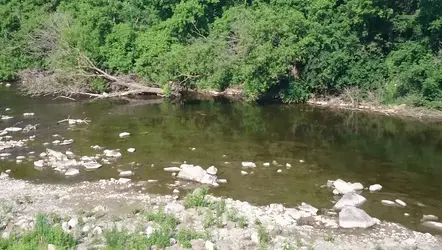

















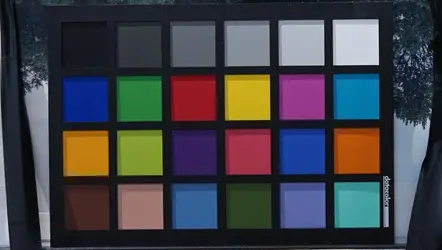
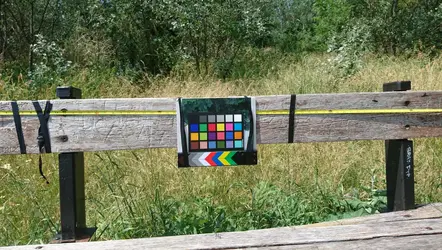
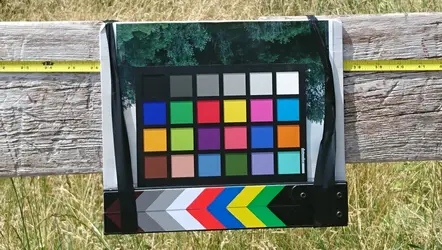




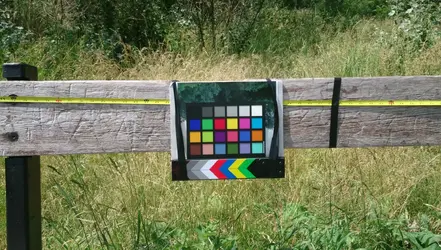
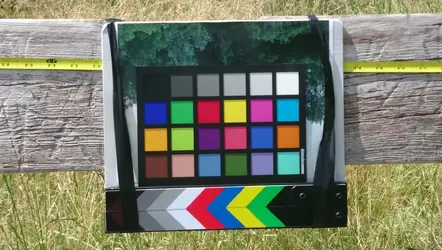





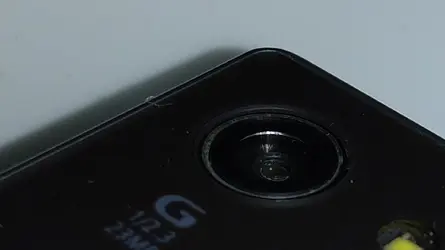










![[No title]](/data/xfmg/thumbnail/39/39420-c7c6e6f01cdeeceeb81ee717b24dd629.jpg?1734173503)
